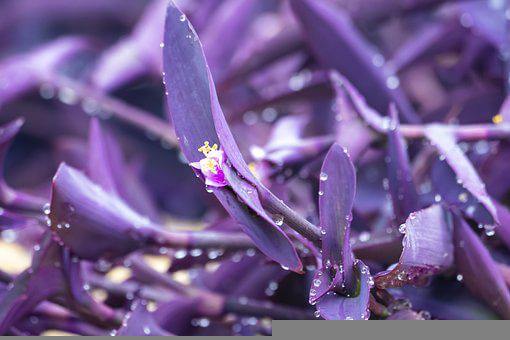Last Updated on May 23, 2023 by a Friendly Gardener
Commonly referred to as Spiderwort, this resilient plant is a terrific option for beginner home gardeners.
The Wandering Jew Plant
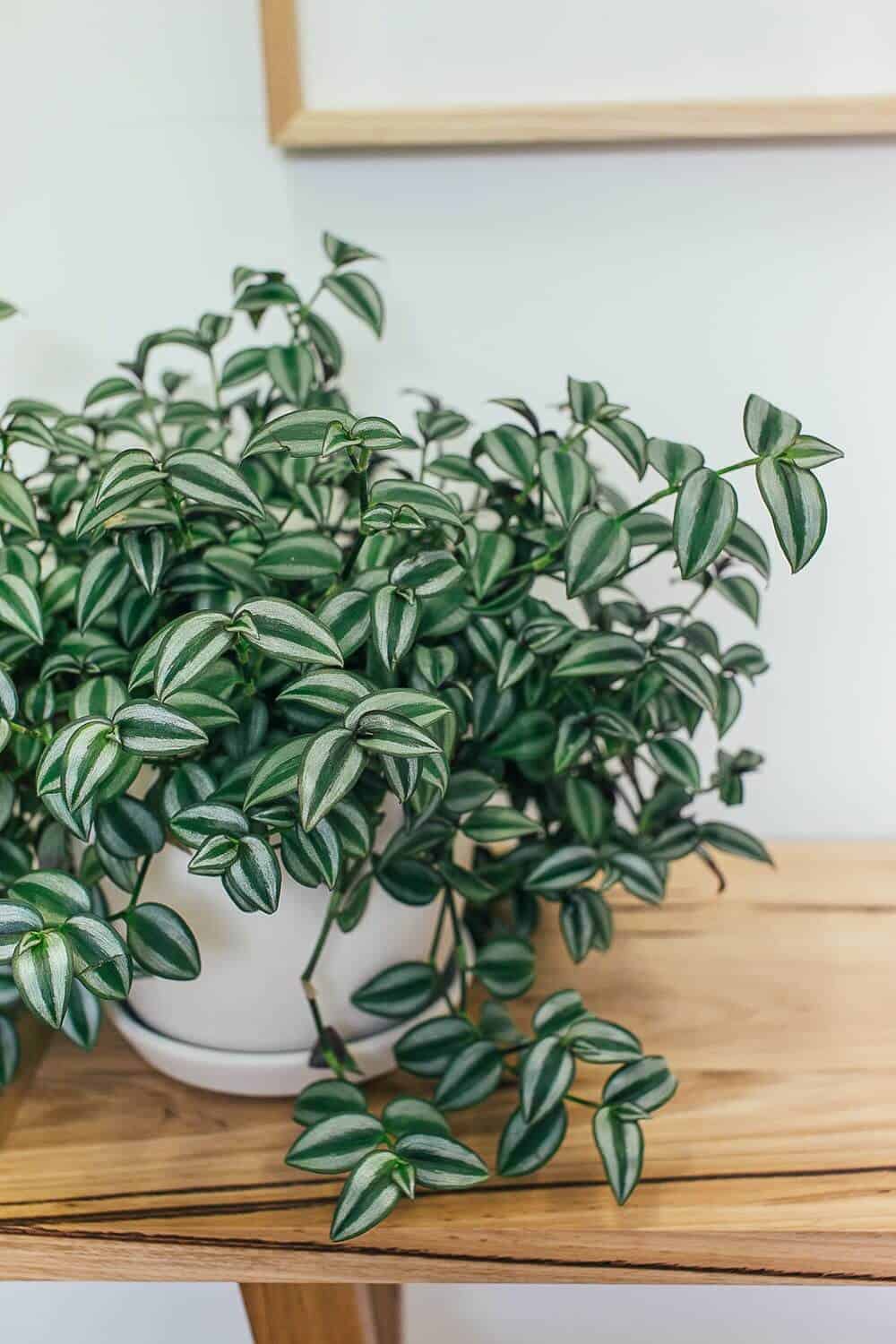
This delightful plant belongs to the Commelinaceae family, which boasts more than 650 species of herbs, climbers, and a few epiphytes for good measure. The Tradescantia, popularly known as the Wandering Jew includes tons of varieties with each being unique. The Wandering Jew is adaptable to indoor and outdoor cultivation with the proper climate.
The Tradescantia is an evergreen perennial native to Guatemala and Mexico. It does well outdoors in frost-free regions as a ground cover. It flowers tiny, three-petaled lavender blooms. Indoor Wandering Jews will most likely not flower.
Leaves are spaced approximately an inch apart, hence the plant is also called the Inch plant, Colorful oval-shaped foliage is a stunning addition wherever placed. Individual leaves can grow to 2.5 inches in length while trailing stems can reach two feet.
Wandering Jew Plant Care
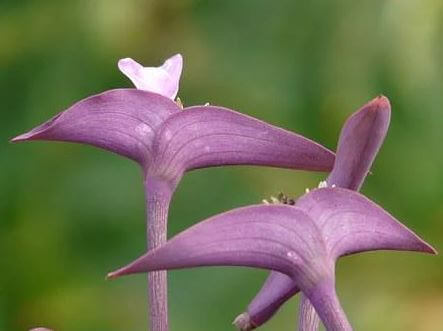
Easy and low maintenance, the Tradescantia has only one major requirement to thrive, and that is keeping the soil bed moist but never soggy. Ideal as a hanging pot for positioning on a bookshelf, their trailing vines will cascade downward, making a striking décor statement.
Generous bright indirect light is fundamental when selecting where to locate them. Frequent pinching back will impede their appearing bare-looking and leggy. The Wandering Jew, unfortunately, does not enjoy a long lifespan but does allow for easy propagation with stem cuttings.
Soil
Quality potting soil that is rich in organic matter is perfect for Tradescantia. An optimal soil mix recipe will include one part compost and one part potting soil or equal portions of peat, potting soil, and compost. But soil should be well-draining as sitting in sit in water-logged or soggy soil is the principal risk to their health. Rootsare at risk for root rot. Add some sand or perlite to your potting mix to aid drainage. If you are worried about drainage, mix sand, compost, and potting mix in equal parts.
Light
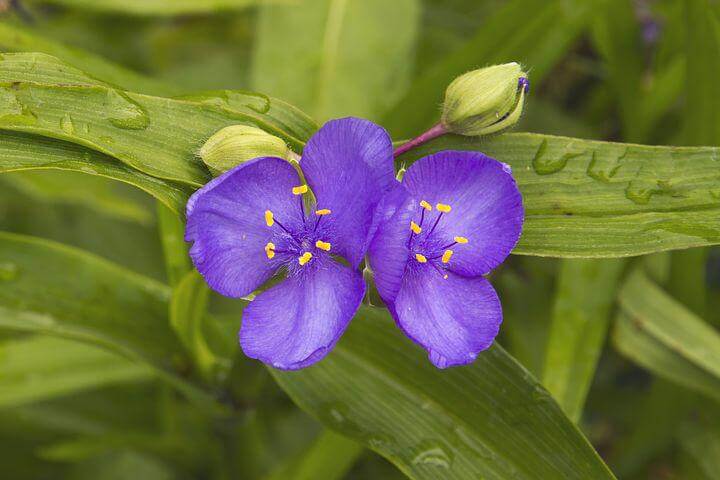
Bright natural sunlight that is indirect is ideal for your Wandering Jew plant. Place it near a window that provides a daily sunlight minimum of eight hours. Direct sunlight with UV rays will scorch the leaves. If the plant’s color begins to fade, your plant is not getting enough light.
Water and Humidity
Tradescantia needs constant moisture in the soil bed. Water yours during the springtime and summertime weekly. Watering can be reduced when they go dormant in the winter and autumn. Test the soil bed by placing your fingertip several inches into the soil bed. Water your plant if you feel dry soil.
The Wandering Jew plant prefers humidity that is moderately higher than average. These plants love bathrooms! You can mist your plant every few days as an alternative or use a small space humidifier. If foliage starts turning brown, humidity is too low.
An alternative is the use of a pebble water tray underneath your plant. Fill a tray with pretty stones or pebbles and add water. The plant container should not come in contact with the water and sit above the waterline.
Temperature
The Wandering Jew prefers a temperature range of 65° to 75° Fahrenheit. They can manage temperatures that are a little higher. Temperatures that fall below 50°F will place your plant at risk and can damage foliage.
Feeding
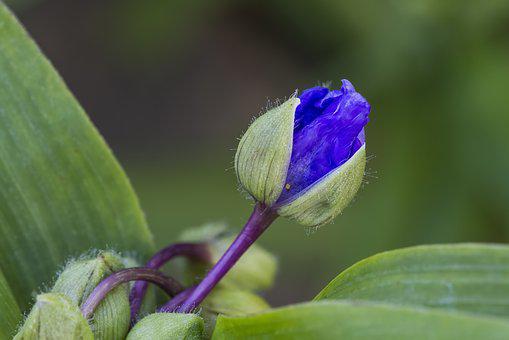
These plants don’t need much feeding. Fertilize your plant every two months with a liquid fertilizer diluted to half-strength. In the case of excessive fertilization, the leaves may lose variegation.
Salt buildup in the soil bed from fertilizer use can burn your plant’s roots. Run water through the planter to flush out salts for roughly five minutes. You can also flush the plant using a hose outdoors.
Pruning
The Tradescantia is an aggressive rapidly growing plant. If not pinched back often, it will become leggy. For a bushier-shaped plant, trim stems regularly, snipping just above a joint. To contrast legginess, prune stems regularly approximately one-fourth of their length.
Wandering Jew Propagation
Are you asking yourself how to propagate wandering Jew? These plants are among the easiest to propagate using stem cuttings. Snip a one-inch piece of stem, that bears at least a leaf. Place the stem cutting end into potting soil. Water the soil bed regularly. Your new plant should develop roots in several weeks. Rooting hormone is not necessary.
You can also root a stem cutting from your Tradescantia in a jar or glass of three inches of water. Remove foliage that risks being submerged. Put the stem cutting in water and place the jar in a brightly lighted spot. Change the water when it turns cloudy or every two weeks. New roots will form after several weeks. When the new roots grow a few inches long, transplant your new plantlet to its pot with potting soil.
Repotting
Stem cuttings that have taken root should be repotted to a bigger pot to encourage proper growth. Mature plants will benefit from repotting annually. Any container will do if it features a sufficient number of drainage holes. Clay or terracotta pots will contribute to drying out the soil bed more quickly. A plastic container will retain moisture longer. So, the pot material you choose will contribute to how often watering your plant is necessary.
When repotting, select a new pot that is sized a couple of inches larger. Remove the plant gently from its actual pot. Fill the new pot approximately a quarter-full using the new soil mix. When repotting check to see if the roots are crowded together. If so, tease them apart gently with a utensil. Insert the plant into its new pot and fill it with the new soil mix.
Tradescantia Toxicity and Pets
The Wandering Jew plant is toxic to horses, cats, and dogs. Symptoms of tradescantia toxicity in pets include:
- Conjunctivitis
- Dermatitis
- Eye area redness
- Itching and scratching
- Loss of fur
- Muzzle redness and irritation
- Palmar ulceration
- Redness between toes and on paws
The sap is also known to cause dermatitis in humans after contact.
Pests, Diseases, and Problems
The Wandering Jew is susceptible to aphids and spider mite infestations.
Plants can be treated successfully with an organic insecticidal soap or neem oil. Neem oil is a natural organic insecticide and fungicide produced by pressing seeds from a neem tree. It will not harm animals or humans. It is considered completely safe for area wildlife including birds. It will target pests. Neem oil can be used for treating spider mites, aphids, scale, and whitefly among others. As a natural fungicide, it performs effectively when used for fungal infections including rust, mildew, blight, leaf spot, etc.
If lower leaves on the plant’s stems begin to drop, this is usually a sign that your plant necessitates more light. In warmer seasons, you can move your plant outdoors to a spot partially sunny and partially shady. Do not place in a location with over-exposure to sunlight.
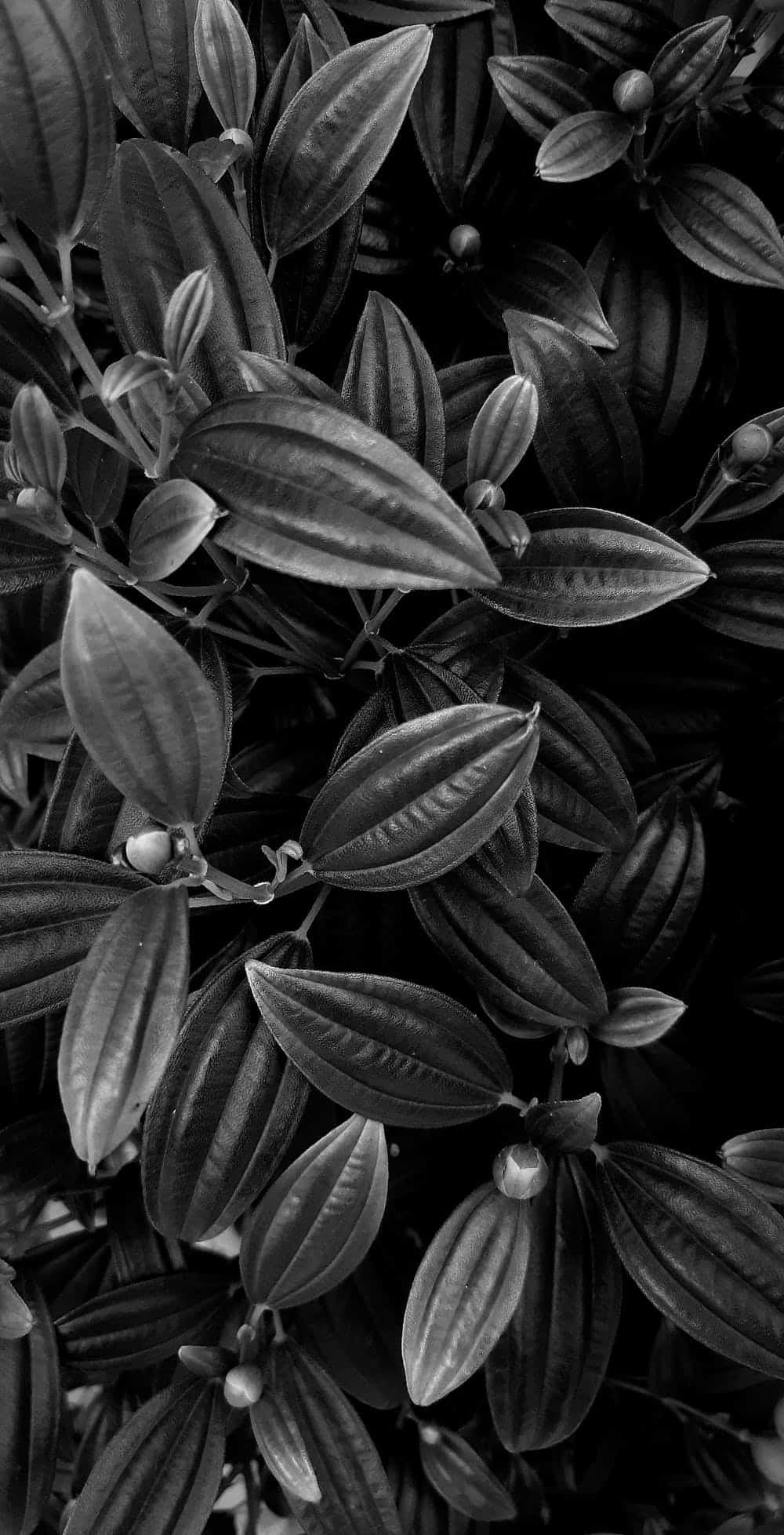
Black foliage or mushy stems indicate root rot. All affected parts of the plant need to be cut off. You cannot save rotted sections so dispose of them. Healthy roots should be repotted in fresh soil after treatment with a fungicide.
A Final Consideration

If you’d like a vividly colorful plant to liven up your indoor décor, the Wandering Jew offers beautiful, lush, variegated foliage. With its resilient, hardy nature and low maintenance needs, this is the perfect plant for a beginner home gardener to start with or make a lovely gift for those without much time to dedicate to houseplants.

